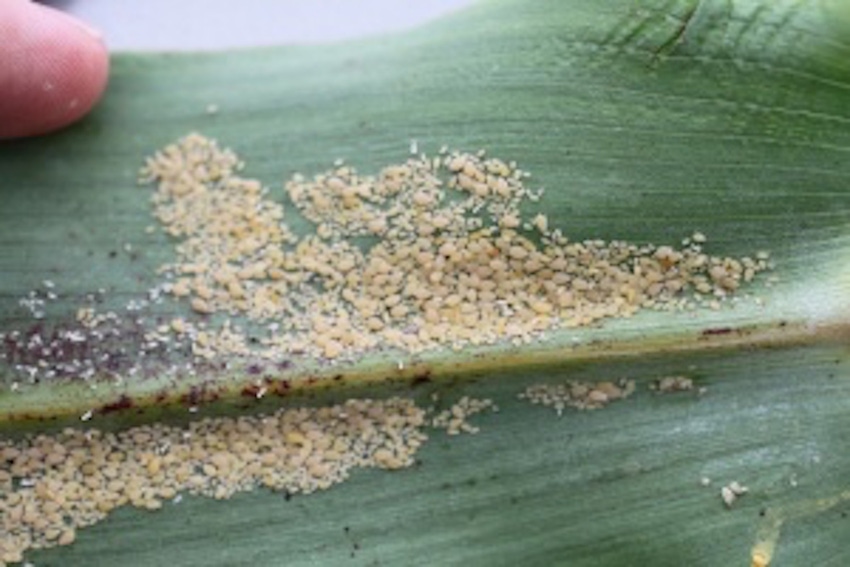July 9, 2017

Tiny, hungry and rapidly reproducing sugarcane aphids have made their annual migration to South Carolina to feast on grain sorghum, an agricultural commodity that had been gaining popularity.
The bugs can’t survive South Carolina winters so they migrate from warmer states each year. Once here, they can quickly colonize plants by the thousands. In addition to injuring or even killing grain sorghum plants, sugarcane aphids secrete a sticky substance that can clog and damage agricultural harvesting equipment. Field trials in other states have shown sugarcane aphids to cause 20-50 percent crop loss in some fields and total loss in others, including in South Carolina.
Growers should scout fields for aphids once or twice weekly and, in most cases, if more than 50 aphids are found on one leaf, growers should apply an insecticide, said Francis Reay-Jones, an entomologist at Clemson’s Pee Dee Research and Education Center near Florence. Farmers can apply either Transform WG or Sivanto Prime. Refer to the product labels for application instructions. More detailed information on insect control for grain sorghum is available online here.
Grain sorghum had become an increasingly popular agricultural commodity before sugarcane aphids first arrived in South Carolina in 2014, said David Gunter, a grain specialist with Clemson University Cooperative Extension. The grain is used for animal feed. It had become a good alternative to dryland corn because of its drought resistance and strong yield potential without the need for costly insecticide treatments.
South Carolina farmers harvested around 14,000 acres of grain sorghum in 2012, more than double the amount harvested five years prior, according to the U.S. Department of Agriculture. Information is not available for more recent years, but Gunter said planted acreage has dropped.
“I think sugarcane aphids have kind of scared off growers, along with commodity prices,” Gunter said.
Data are limited on sugarcane aphid control for grain sorghum because this is a relatively new problem. Sugarcane aphids were first identified in the U.S. in Florida in 1977, but they fed on sugarcane. In 2013, the pest began feeding on grain sorghum, as well, and spread rapidly across the Southeast.
The pest has been spotted as far north as Darlington County, Reay-Jones said.
Some sorghum varieties have shown tolerance to sugarcane aphids. Gunter recommends farmers interested in grain sorghum plant DeKalb DKS 48-07 or 37-07, Pioneer 83p17 or Sorghum Partners SP7715 or SP73B12.
“When I say these varieties are tolerant, that does not mean they are resistant, but it may save farmers one insecticide application,” Gunter said.
Reay-Jones continues to test varieties for tolerance to sugarcane aphids at the Pee Dee Research and Education Center. Fellow Clemson entomologist Jeremy Greene at the university’s Edisto Research and Education Center near Blackville is performing similar testing.
“Tolerant varieties are not a silver bullet. If you get heavy pressure, you’ll still need to apply treatment,” Reay-Jones said.
Reay-Jones also is evaluating the effectiveness of insecticidal seed treatments, developing sampling plans and researching the impact nitrogen fertilization may have on the presence of sugarcane aphids.
About the Author(s)
You May Also Like




